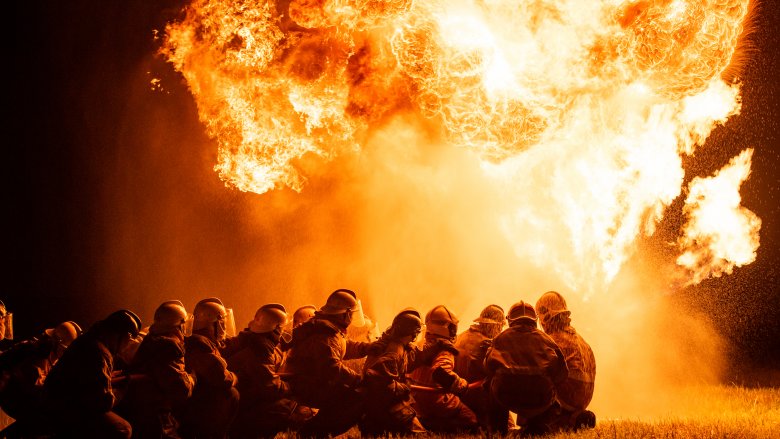The Highest Temperature A Human Can Actually Survive
Mankind has a love-hate relationship with heat. Extremely attractive people are called hot. Hope and knowledge are both flames. And when Elvis felt his temperature rising, his brain on fire, and flames "licking [his] body]," he was "just a hunk, a hunk of burning love." At the same time, people burn with hatred, hell is a lake of fire, and if you can't take the heat, you need to get out of the kitchen. As with all things, moderation is key when it comes to heat. Too little and you'll freeze to death — too much, and you'll become a hunk, a hunk of burning corpse. But just how hot can it get before you stop sweating bullets and your body is completely shot to hell?
According to National Geographic, the human body is ill-suited to spend extended periods of time in temperatures higher than its own internal temperature, which on average clocks in at 98.6 degrees Fahrenheit. Once your innards hit 104 degrees, you're in the danger zone, but unfortunately not the one that Kenny Loggins and Archer sang about. At that point you're on the cusp of heat stroke, which officially strikes when you reach 105 degrees. At 107 degrees, you're in terrible peril of exiting the danger zone and entering the dead zone as your blood flow slows and your organs sustain potentially "irreversible damage."
But even a temperature of 107 degrees or above isn't a guaranteed death sentence. Outside Online describes the harrowing case of Willie Jones, who spent 24 days at a hospital after his core temperature reached a scorching 115.7 degrees. It's also important to note that hydration is an important factor in whether you beat the heat or lose your life to it.
Of course, what we've described is the highest internal temperature a person might survive. You might be wondering about how much external heat a person can tolerate. Live Science writes that most humans can endure about 10 minutes in 140-degree heat before suffering from hyperthermia, a lethal form of which is the aforementioned heat stroke. If you're a firefighter, however, you have to battle far higher temperatures.
Chris Armstrong, fire lieutenant of Richmond, Virginia, told WTVR that "a typical house fire gets above 1,000 degrees." Plus, they have to wear about 50 pounds of gear. How do they keep from melting? They stay in the burning house for brief bursts, switching places in quick rotation. So even a hellish amount of heat is survivable in moderation with the right training. That, and firefighters are actual, real-life superheroes.
